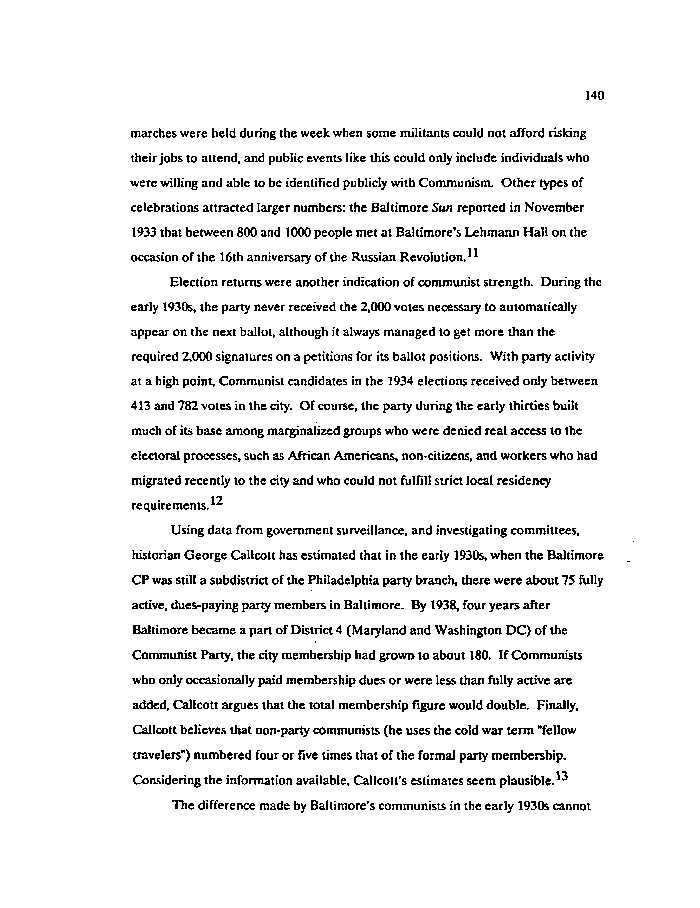|
140
marches were held during the week when some militants could not afford risking
their jobs to attend, and public events like this could only include individuals who
were willing and able to be identified publicly with Communism. Other types of
celebrations attracted larger numbers: the Baltimore Sun reported in November
1933 that between 800 and 1000 people met at Baltimore's Lehmann Hall on the
occasion of the 16th anniversary of the Russian Revolution.**
Election returns were another indication of communist strength. During the
early 1930s, the party never received the 2,000 votes necessary to automatically
appear on the next ballot, although it always managed to get more than the
required 2,000 signatures on a petitions for its ballot positions. With party activity
at a high point, Communist candidates in the 1934 elections received only between
413 and 782 votes in the city. Of course, the party during the early thirties built
much of its base among marginalized groups who were denied real access to the
electoral processes, such as African Americans, non-citizens, and workers who had
migrated recently to the city and who could not fulfill strict local residency
12
requirements.
Using data from government surveillance, and investigating committees,
historian George Callcott has estimated that in the early 1930s, when the Baltimore
CP was still a subdistrict of the Philadelphia party branch, there were about 75 fully
active, dues-paying party members in Baltimore. By 1938, four years after
Baltimore became a part of District 4 (Maryland and Washington DC) of the
Communist Party, the city membership had grown to about 180. If Communists
who only occasionally paid membership dues or were less than fully active are
added, Callcott argues that the total membership figure would double. Finally,
Callcott believes that non-party communists (he uses the cold war term "fellow
travelers") numbered four or five times that of the formal party membership.
Considering the information available, Callcott's estimates seem plausible.
The difference made by Baltimore's communists in the early 1930s cannot
|

